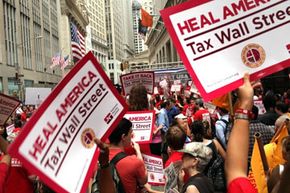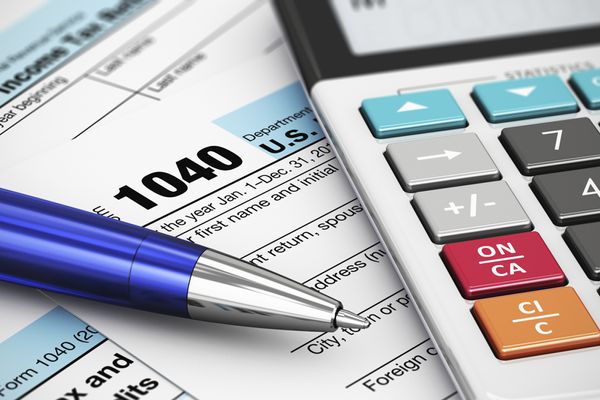Thanks to Occupy Wall Street and frustration about the floundering economy, income inequality has become a hot topic. One source of frustration stems from the belief that the rich have gotten richer over the past few decades due to tax breaks and other loopholes designed to help them keep their money in their pockets. Has this always been the case, however? Did we -- rich and poor alike -- pay more taxes in the past? This is a fascinating and complicated question, and the answer largely depends on what numbers you use: the marginal tax rate, the effective tax rate, or the total U.S. tax burden as a percentage of gross domestic product (GDP).
Let's start with the marginal tax rate. The United States employs a progressive tax system, meaning that higher levels of income are taxed at a higher rate. For example, in 2012, the IRS taxes personal income between $0 and $8,700 at 10 percent for unmarried filers. That's called the marginal tax rate, and it increases with each tax bracket. The marginal tax rate for income over $8,700, but not over $35,350 is 15 percent. But here's the tricky part; a person who earns $35,350 doesn't owe 15 percent on all $35,350. That person owes 10 percent on the first $8,700 (=$870) and 15 percent on the remaining $27,650 (=$3,997) for a total tax bill of $4,867, or 13.7 percent of all income.
Advertisement
Why is this important to understand? Because the marginal tax rate is often used to compare today's tax rates to those of the past. Federal income tax was first collected in 1913, when all income below $435,292 (in today's dollars) was taxed at a flat 1 percent, and the highest marginal tax rate of 7 percent was reserved for income over $11.3 million [source: Tax Foundation]. Today's highest marginal tax rate is 35 percent on income over $388,350, which seems like a dramatic increase from 1913. But when you look at the entire 99-year run since 1913, today's top marginal tax rate is incredibly low. Let's look at some numbers:
- During WWI, the top rate hovered around 73 percent, and in 1944 and 1945, the top rate peaked at 94 percent.
- From 1950 to 1963, the top rate stuck at 91 or 92 percent.
- From 1964 through 1981, the top rate fluctuated between 75 and 69 percent.
- Even under Ronald Reagan, a famously anti-tax president, the top rate remained 50 percent until the final two years of his presidency, when it dipped to 28 percent, the lowest top marginal rate since the 1920s.
- The 2014 top rate is 39.6 percent, up from 2012's 35 percent, the lowest in the past 82 years, except for 1988 through 1992 [source: Tax Foundation].
So that means we pay less money in taxes than previous generations, right? Not exactly. We'll explain why on the next page.
Advertisement



